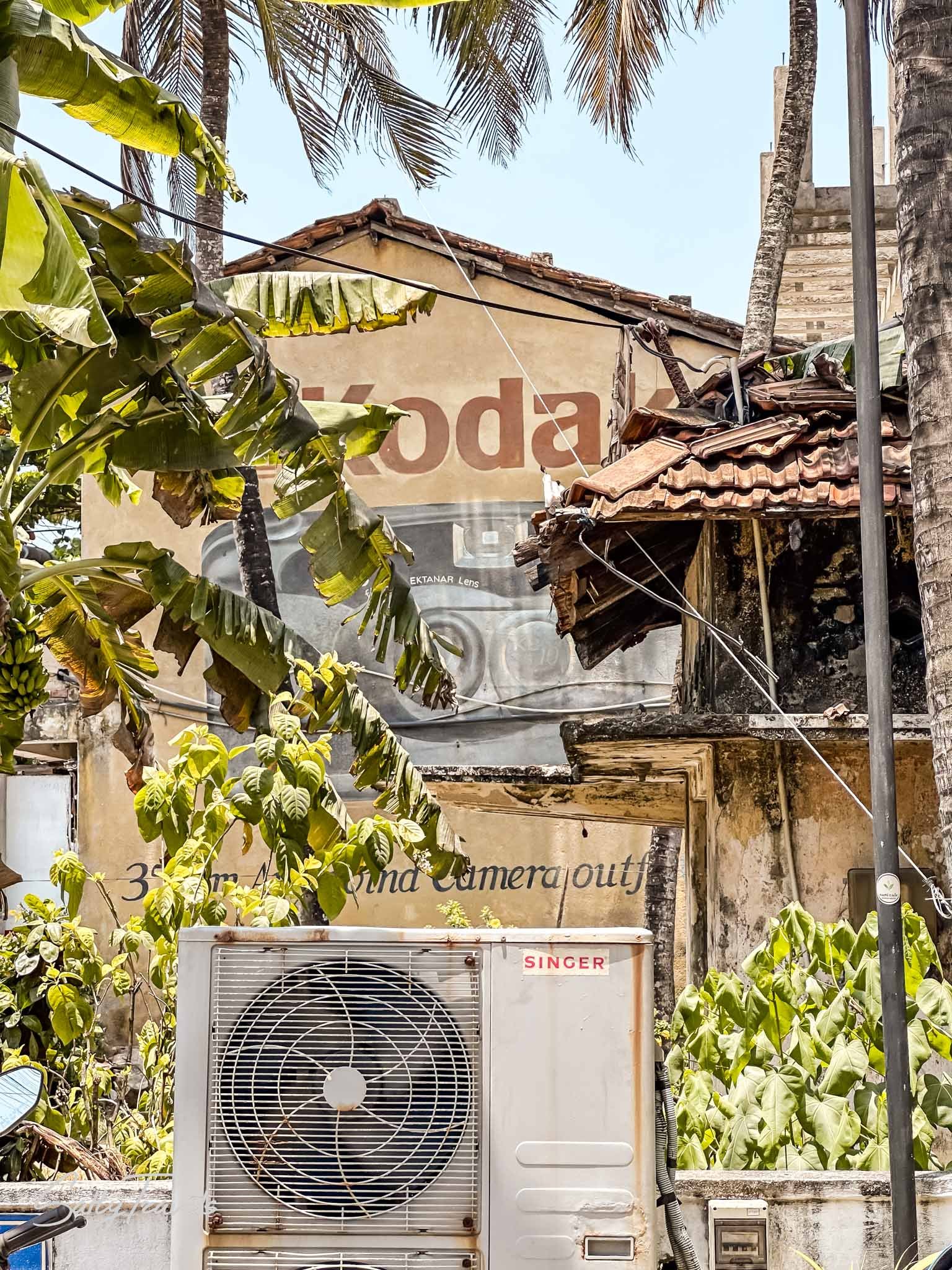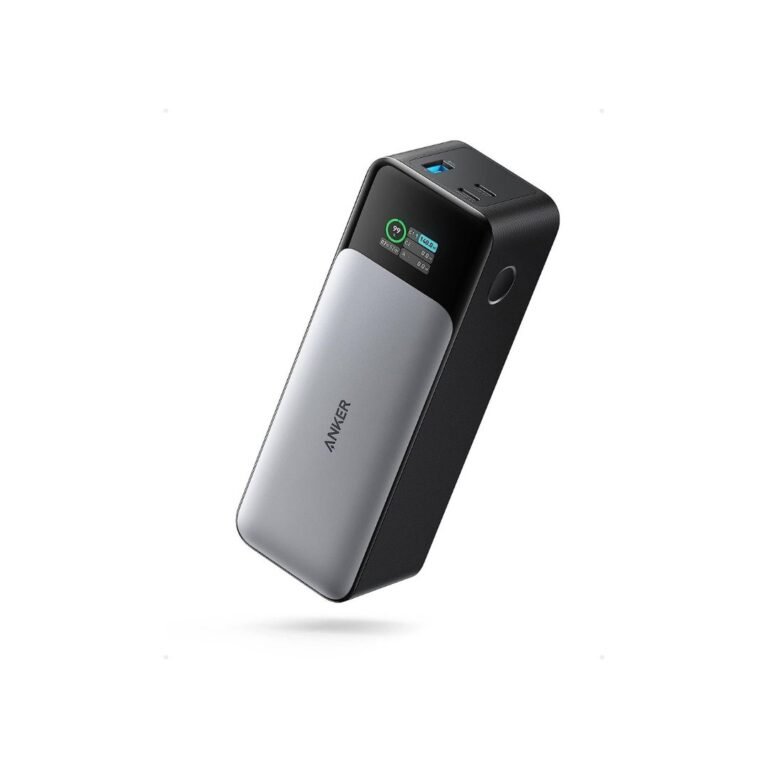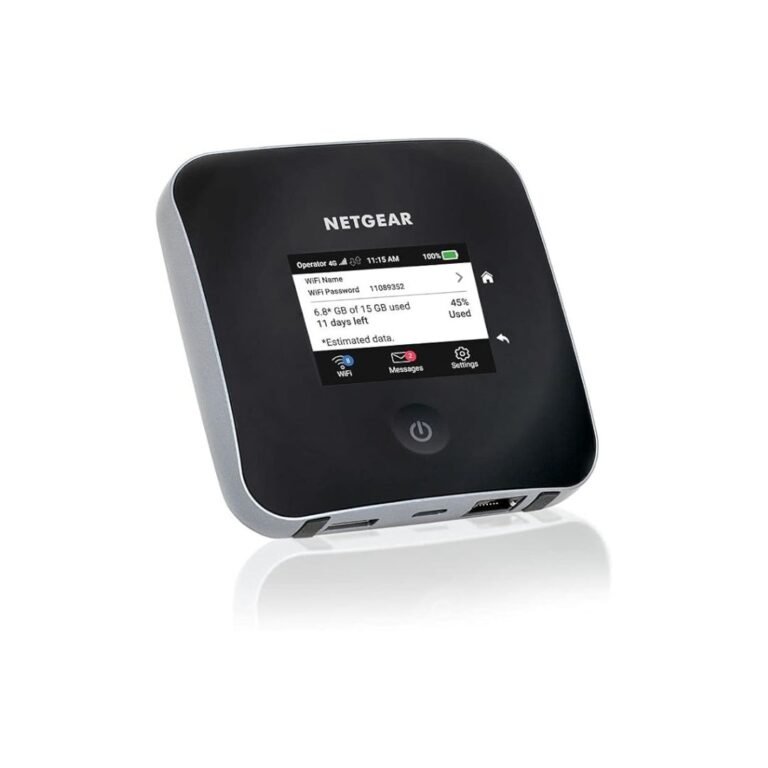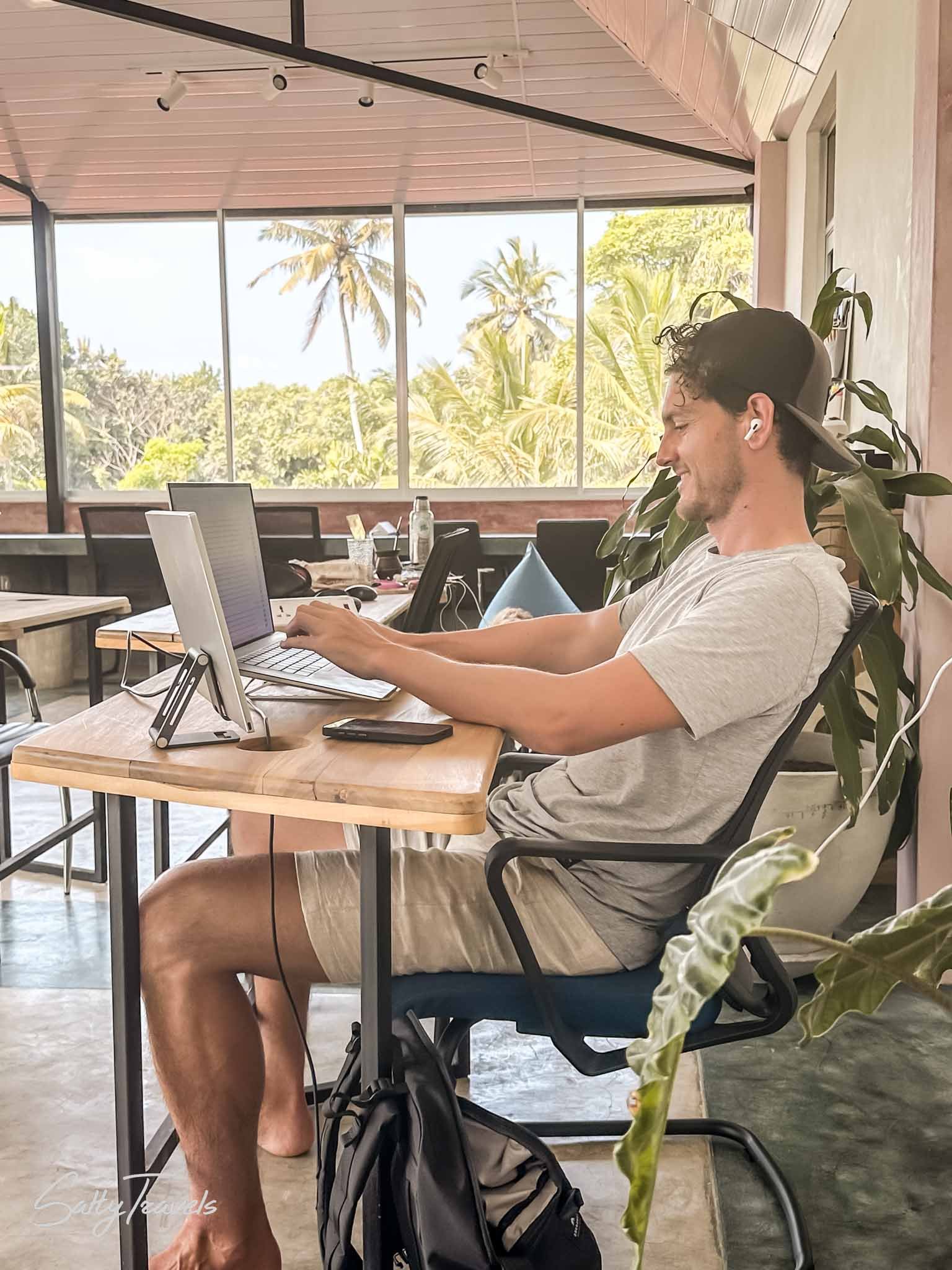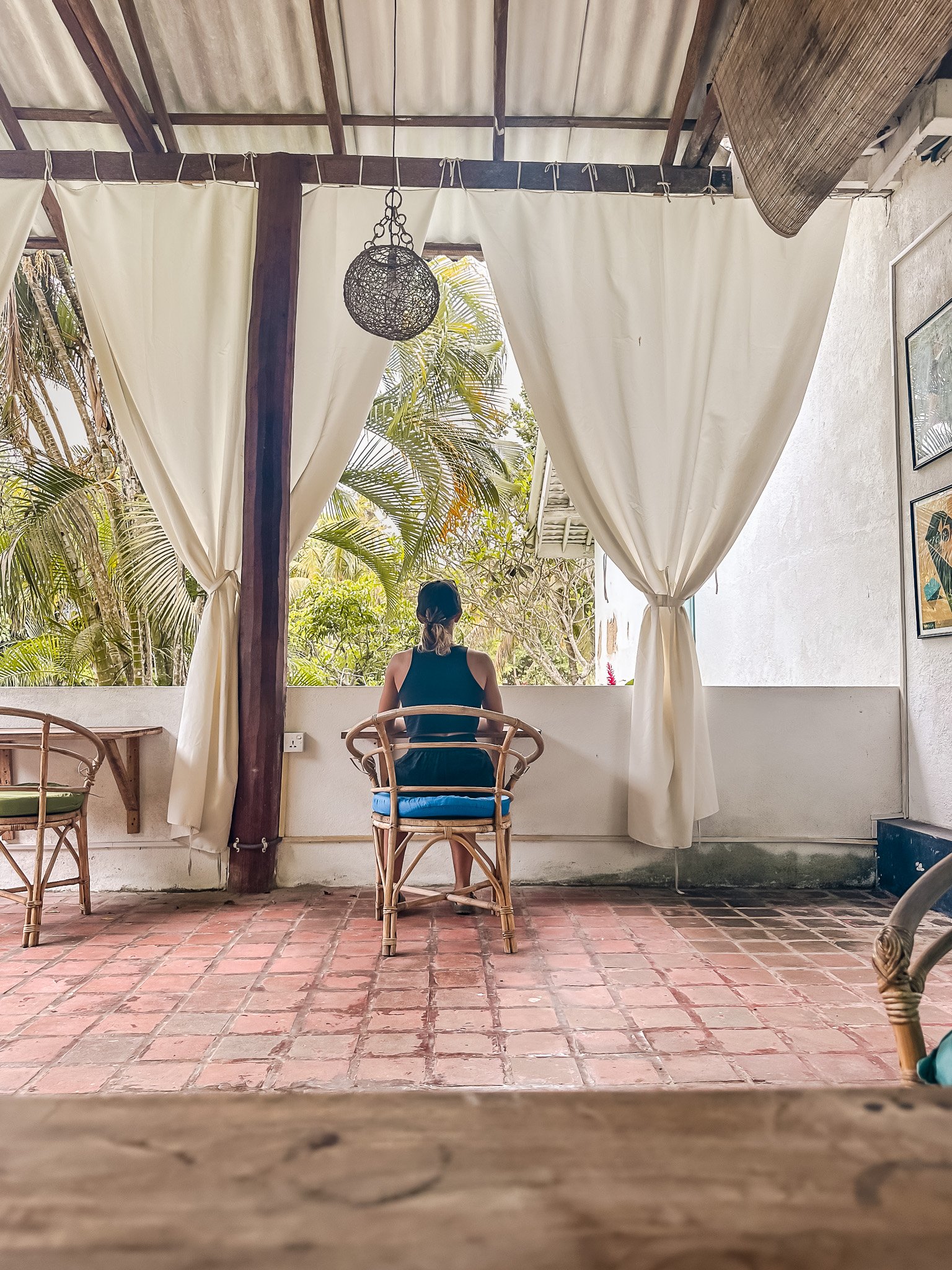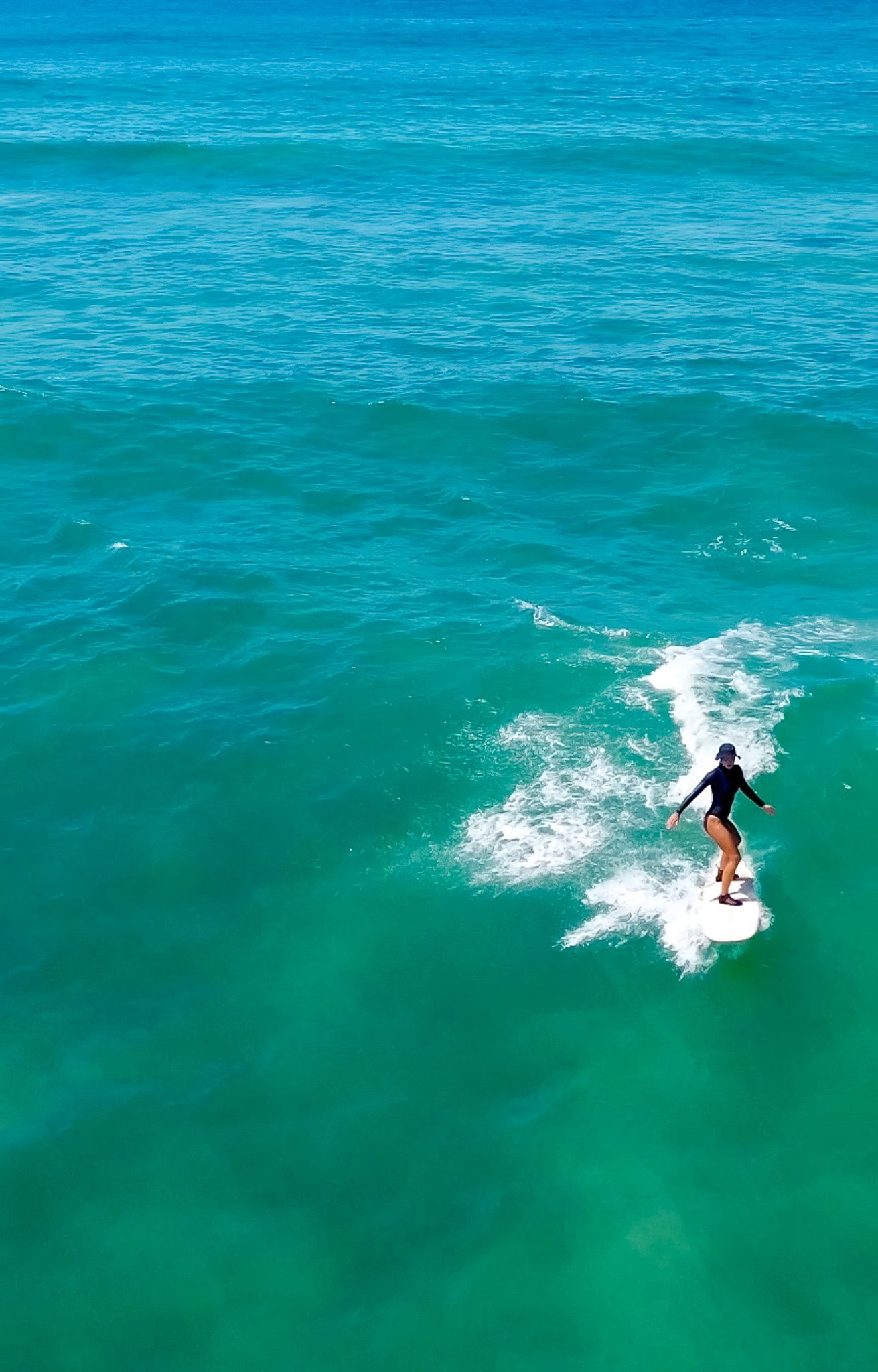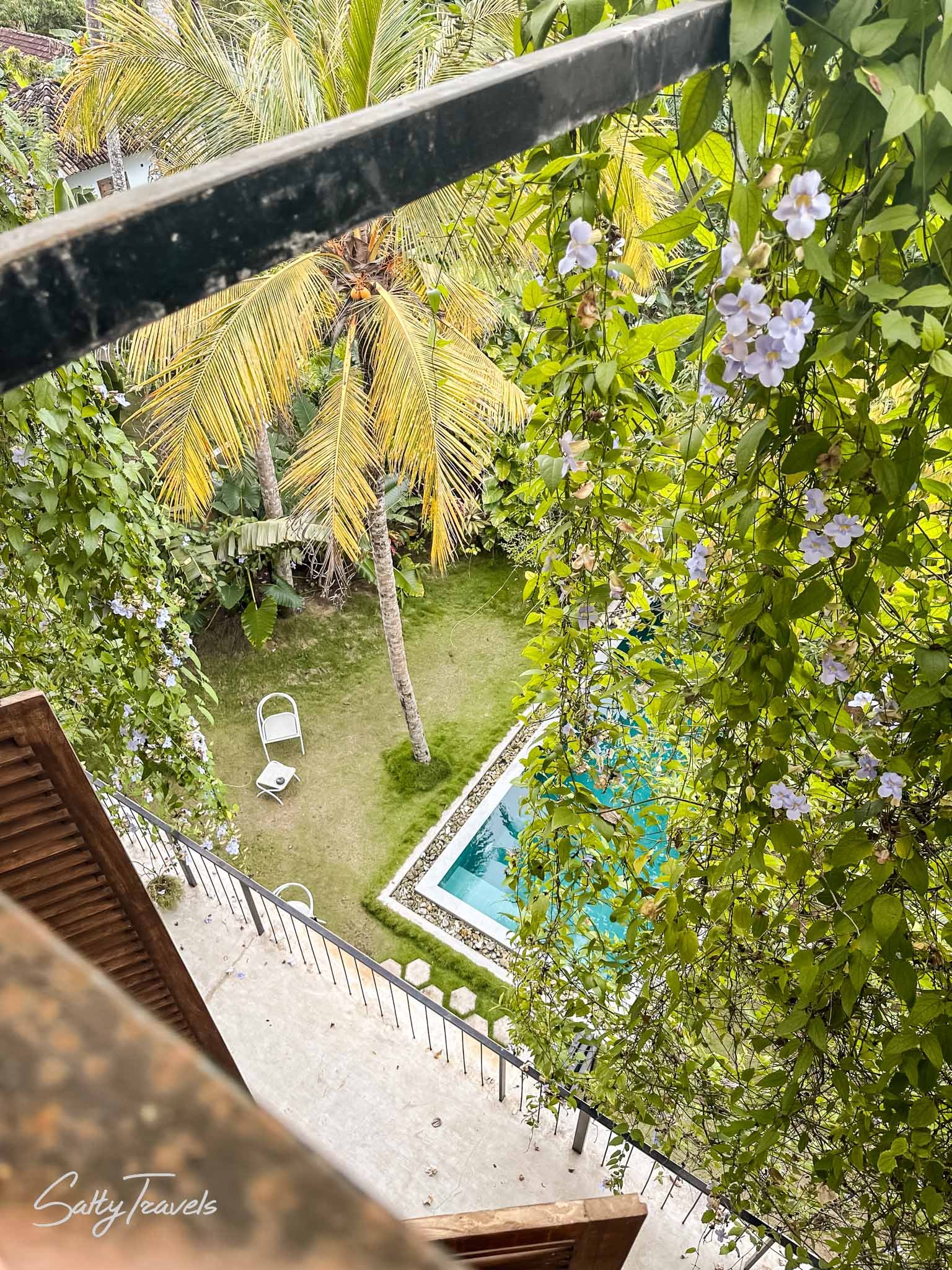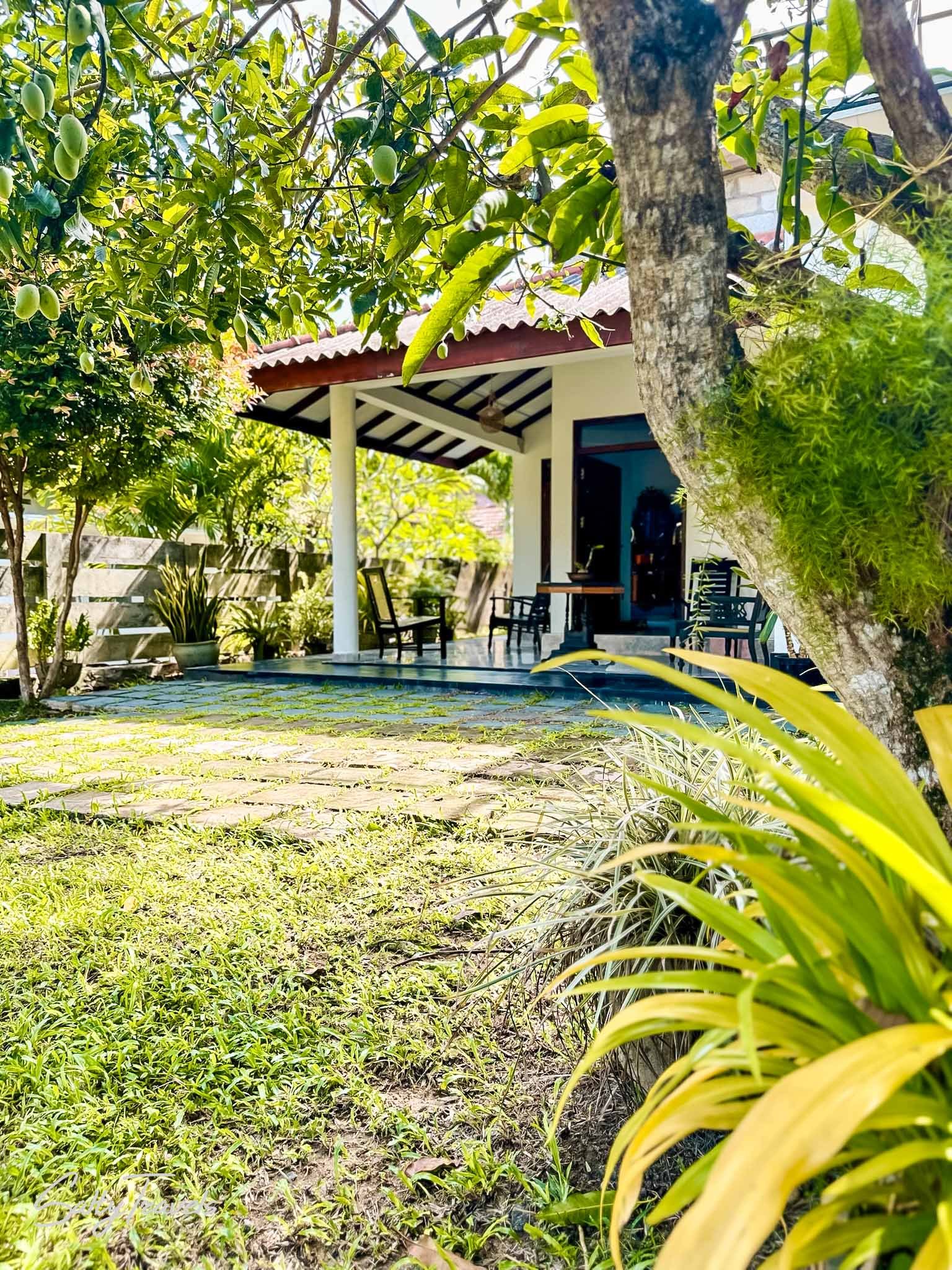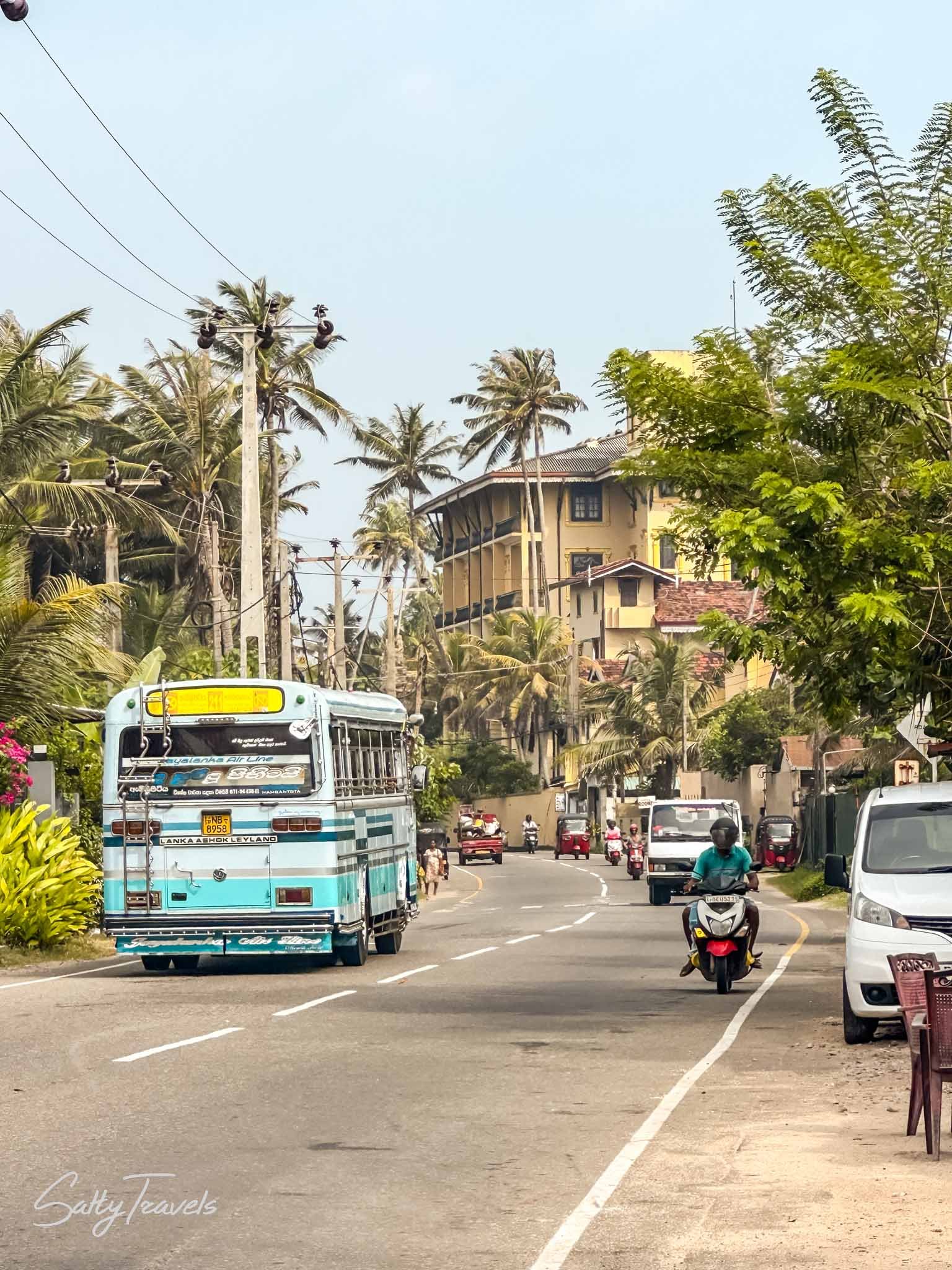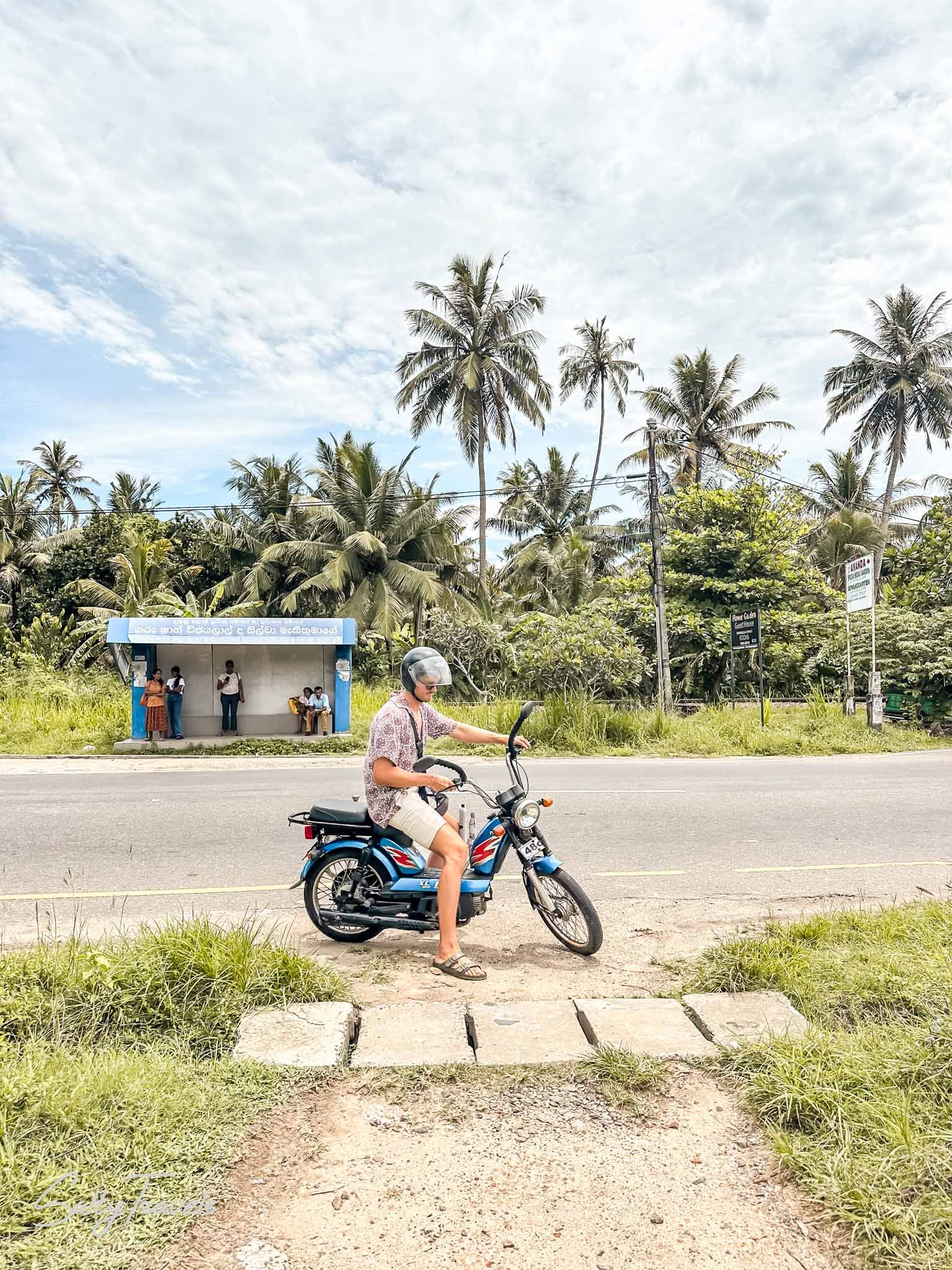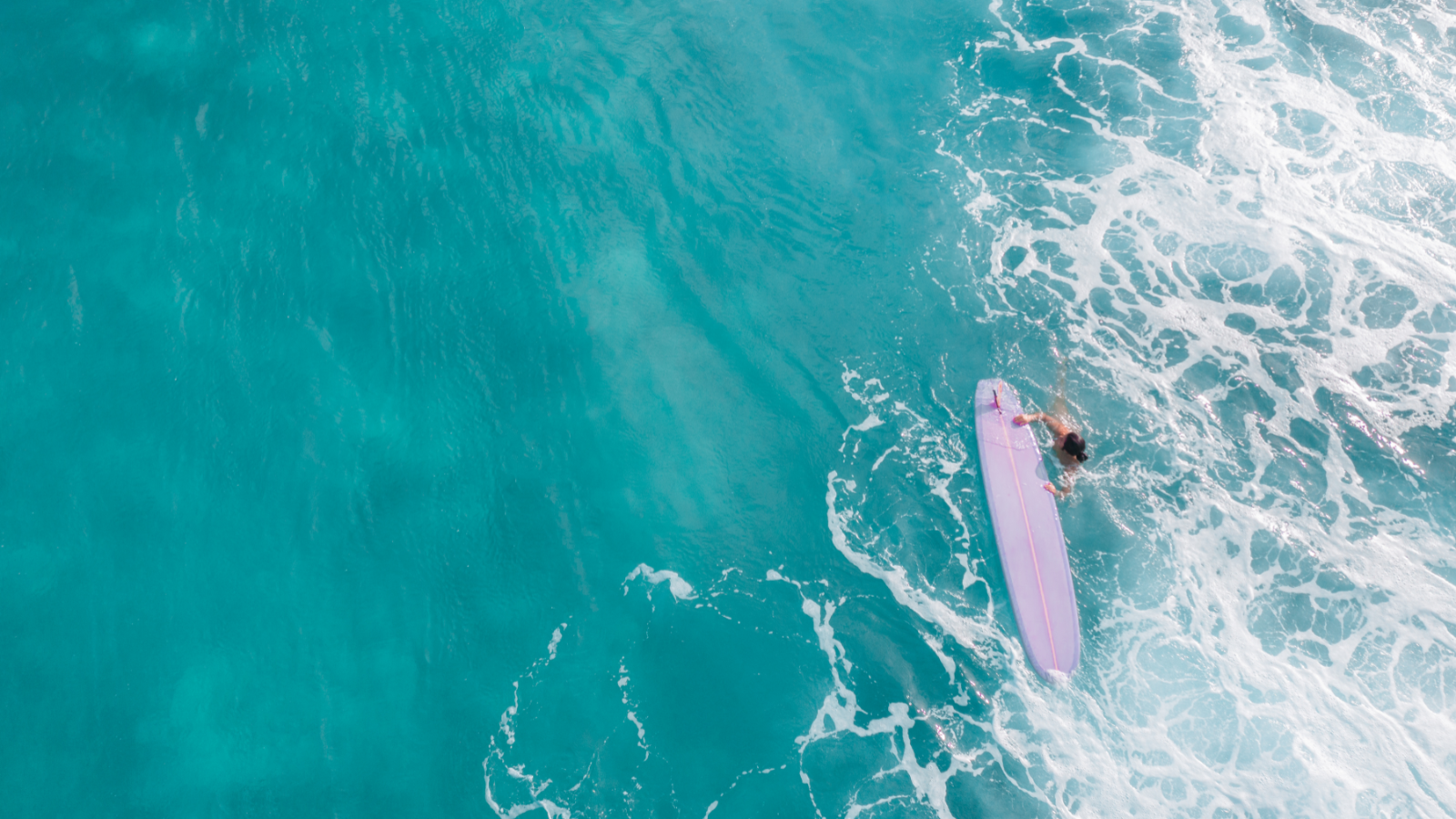When I first arrived as a digital nomad in Sri Lanka for a three-month stay, I had no idea how many little details I’d have to figure out along the way – from finding alternative solutions for power cuts, surviving the chaotic traffic, and organising office furtniture to dealing with police checks and renting a scooter with a surfboard rack that actually works. I’m sure you know that feeling of arriving in a new place and thinking, “I wish I knew this before.”
That’s exactly why I created this comprehensive guide for anyone planning to work remotely in Sri Lanka. It’s packed with first-hand tips and useful insights for digital nomads – from surfing and coworking to finding accommodation, dealing with local challenges, and navigating everyday life. I hope it helps you prepare for life on the island, avoid common pitfalls, and make the most of your experience.
Table of Contents
1. Visa for digital nomads in Sri Lanka
Digital nomads in Sri Lanka typically enter on a tourist visa, which is initially granted for 30 days. For a smoother process, it’s best to apply for an Electronic Travel Authorization (ETA) online before arrival – though a visa on arrival is also available. Visa regulations can change, so always check the latest info on the official Sri Lankan immigration website.
Extension
If you plan to stay longer than 30 days, you can apply to extend your tourist visa. The short-term visit visa allows extensions of up to 270 days total from your arrival date, processed in three stages:
- 30 days on entry
- 60 days for the first extension
- 90 days each for the second and third extensions
For stays up to 6 months, you can apply online through the e-Visa extension portal. It’s also possible to do it in person by visiting the Department of Immigration & Emigration (Head Office). If neither option works for you, consider using a licensed visa agency to handle the process.
☀️ My experience: We applied for our Sri Lanka visa online and also extended it online for the full 3 months of our stay. The process was smooth overall – except that the extension took longer than expected, and we ended up staying in Sri Lanka for two days without a valid visa. To avoid this kind of stress, apply for your visa extension in Sri Lanka as early as possible.
2. Prices in Sri Lanka
If you talk to anyone who’s recently been to Sri Lanka, chances are you’ll hear it’s expensive – at least that’s what we kept hearing from friends before our trip.
And it’s true: in recent years, prices in Sri Lanka have increased significantly. I first visited in 2016, when it was a paradise for backpackers on a tight budget – often compared to Southeast Asia for its affordability. That changed after the 2022 economic crisis and the pandemic-driven collapse in tourism. Prices for essentials like fuel and rice have doubled or more. For instance, a litre of petrol cost about 150 LKR in 2016 and now goes for 350–400 LKR in 2024.
Given that Sri Lanka is still developing its infrastructure, it can feel pricey compared to other countries in the region. That said, it’s still very doable for digital nomads in Sri Lanka – especially if you embrace local living, like renting directly from locals or swapping out avocado toast for Sri Lankan rice and curry.
Daily costs for digital nomads in Sri Lanka
To give you an idea of the cost of living, here’s what we experienced during our stay:
- Accommodation varies widely. You can rent a two-bedroom local villa for around €800 per month. On the other hand, a room in a co-living setup may cost €1200–€1600 per month.
- Food is also a matter of lifestyle. At a local restaurant, meals range from €2 to €5. But if you head to Western-style cafes, expect to pay €7–€15 for dishes like smoothie bowls, pizzas, or salads.
- Transport is one of the few things that remains super budget-friendly. Public buses and trains cost between €0.50 and €2, while tuk-tuks usually charge 50–100 LKR (€0.14–€0.28) per kilometre.
- As for coworking spaces in Sri Lanka, prices depend on the area. Outpost in Weligama charges about €180/month, and Nets in Ahangama is around €150/month.
Price vs. quality
Although prices in Sri Lanka have gone up, that doesn’t mean the quality of infrastructure or services has improved at the same pace. It’s easy to assume that if you’re paying close to European prices, you’ll get a similar standard – but that’s often not the case.
Sri Lanka is still catching up in many areas. Service quality and housing standards can be inconsistent, especially outside major hubs. For example, you might rent a villa for €1000/month and deal with random AC or plumbing issues, or rent a scooter with a surf rack so poorly attached that every ride means getting scratched, or you can’t even fold it properly when not transporting a board.
That’s not to say it’s not worth it – just that it’s important to manage expectations. If you’re a digital nomad used to certain comforts, be prepared to adapt. The charm of living in Sri Lanka comes with a more relaxed pace, occasional challenges, and a mindset shift. Flexibility goes a long way here.
ATMs and currency in Sri Lanka
The Sri Lankan Rupee (LKR) is the official currency. As of December 2024, 1 Euro equals approximately 350-400 LKR, though rates fluctuate.
Accessing cash is straightforward, with ATMs in Sri Lanka widely available in cities and tourist areas. Most machines accept international debit and credit cards, including Visa and Mastercard.
However, withdrawing money in Sri Lanka often comes with fees. Local banks typically charge between 300–500 LKR (€0.85–€1.40), and your home bank may add foreign transaction fees on top. To save money, it’s smart to withdraw larger amounts – but keep in mind that most ATMs limit transactions to 40,000–60,000 LKR at a time.
☀️ My experience: If an ATM doesn’t work, don’t stress – just try a different bank. Some machines are more foreign-card friendly than others. We had the best luck with Commercial Bank, Sampath Bank, and People’s Bank using our German DKB card – it worked at every ATM we tried. Our Revolut card, however, didn’t work at People’s Bank, so carrying a backup is definitely a smart move.
3. Internet connection
Sri Lanka has decent internet infrastructure, especially in urban areas and popular tourist or digital nomad hubs. It’s absolutely possible to work remotely from the island – you just need to prepare and know what to look out for.
Internet speed
With average speeds of 20–50 Mbps, the internet in Sri Lanka is usually good enough for remote work, video calls, and uploading/downloading files. We’re both freelancers with busy full-time schedules, and during our stay in Ahangama, we had no issues with the internet in our villa.
⚡️Pro Tip: When searching for accommodation, always ask the host to send a speed test screenshot. It’s the easiest way to check the quality before you book.
It’s also worth asking whether the property has a fiber optic connection. If it doesn’t, check if the owners can install it. But even with fiber, speed can still be limited by a basic package – so it helps to confirm the actual speed, not just the connection type.
☀️ My experience: We asked the owner of our villa for both a fiber optic installation and a better speed package – both requests were no problem, since we were staying for three months. The same goes for other upgrades (like office furniture) – most owners are willing to make improvements if you’re staying for a while.
Mobile data
Mobile data in Sri Lanka is both affordable and widely available. Major providers like Dialog and Mobitel offer solid 4G coverage across much of the island. Monthly data plans typically cost between €5–€20 and include anywhere from 10–40 GB, depending on the provider and package.
☀️ My experience: We went with Dialog after several friends recommended it, especially for its better coverage in the south compared to Mobitel. We bought one SIM card each for our phones, plus an extra one for a router as a backup internet source for work. There are two Dialog booths at the airport exit, so you can grab a SIM card as soon as you land. In February 2024, we paid 2450 LKR (€6.50–€7.00) for 50 GB, which easily covered our needs.
4. Power cuts in Sri Lanka
When preparing for our digital nomad trip to Sri Lanka, our biggest concern was the power cuts. Friends had warned us it was still a real issue. These outages – often caused by fuel shortages, rising energy demand, and outdated infrastructure – can vary in frequency. In some areas, they might happen a few times a week, while in others, just once every couple of weeks. Duration also ranges from just a few minutes to several hours.
While major cities and tourist hotspots (like hotels, restaurants, and coworking spaces) usually have backup generators or solar panels, smaller towns and rural areas often don’t have such setups.
Power cuts in the Ahangama area
When we first arrived in Ahangama, power cuts were still part of daily life. On our very first Sunday, we had an 8-hour outage (from 9:00 to 17:00) – quite the welcome! Thankfully, that was the only full-day cut we experienced. After that, outages were rare, short (15–30 minutes), and happened only 3–4 times during our entire three-month stay.
By March 2024, we noticed major construction work on the local power grid. New electricity lines were installed, which seemed promising. It’s a step forward – though it’s good to remember that not all power cuts are infrastructure-related.
Tips on how to prepare for power cuts
Since power cuts can happen during the week and during working hours, it’s important to have an alternative solution to stay productive. Here are a few tips that will save you a lot of headaches:
- Coworking space with AC and solar panels: It’s a good idea to find a coworking space close to your accommodation that has solar panels (an alternative energy source) and air conditioning (you’ll need it when your home unit is off). This can be your go-to spot during outages. We chose Nets during our stay in Ahangama. You can read more about our experience with coworking spaces in Ahangama here.
- Power bank: Invest in a large power bank – one that can charge your laptop. We bought a high-capacity power bank because we wanted to charge both laptops at the same time. It worked great and now travels with us everywhere.
- Wi-Fi router: Bring a portable Wi-Fi router on your digital nomad trip to Sri Lanka. You can pop in a local SIM card and use it as a backup internet source. We used our Netgear router, and it kept us both online during power cuts.
- Power cut app: There’s a Sri Lankan power cut app that shows when power cuts are scheduled. From our experience, it was only about 50% reliable – but still better than nothing. 😉 To use it, your host will need to share their electricity account number with you.
- Portable light: If you plan to stay home during outages – especially with evening calls – a portable light is essential. The sun sets around 18:00 in Sri Lanka, which is right in the middle of the workday if you’re on European hours.
5. Destinations for digital nomads in Sri Lanka
Sri Lanka offers several destinations that are particularly appealing to digital nomads, mainly thanks to coworking spaces and a vibrant community of people from around the world. Most of the places popular among remote workers are located in the south of the island and offer access to great surf spots.
What sets them apart is their size, infrastructure, and how touristy they are – which means everyone can find a place that suits their needs.
Weligama
Weligama is also located in the south in a big bay with a wide sandy beach. Compared to nearby Ahangama, it feels more like a town – with better access to shops, services, and transport.
- Its growing holiday infrastructure, including a Marriott hotel, makes it popular with tourists, but it also draws plenty of digital nomads looking for a livelier scene.
- You can surf along the entire bay, and the town is home to Outpost, a well-known coworking space.
- Minus: Since Weligama is larger and also a fishing hub, the main beach can feel dirty. Trash from the town and boats, as well as stray dogs, are common sights. An ugly river also flows into the ocean here. While the bay is huge and still beautiful at first glance, the water quality can be off-putting. On top of that, surf spots often get extremely crowded, especially with hundreds of beginners sharing the same breaks.
☀️ My opinion: Weligama feels too touristy for my taste, with lots of people coming just for vacation. Compared to smaller villages like Ahangama or Midigama, it has a less authentic vibe.
Ahangama
Ahangama is located just a 20-minute drive from Weligama. It has become a rising star for digital nomads with new cafes, boutiques, and yoga studios.
- The area offers many surf spots along the coast, and it already has two proper co-working spaces (FocuseHub and Nets).
- It’s smaller than Weligama and there’s less of a party scene, which makes it ideal for people who want a calmer, more balanced lifestyle.
- It’s also less touristy, thanks to fewer sandy beaches and a lack of big hotel chains. Instead, you’ll find small boutique hotels, local eateries, and a more authentic feel overall.
- Minus: One major downside is the extremely busy main road. Most surf spots, restaurants, and shops are located along it, which makes walking around a bit of a mission – especially since there are no sidewalks. At first, every scooter ride can feel like a life-or-death situation, though you do eventually get used to it.
☀️ My opinion: We chose to stay in Ahangama because we wanted a less mainstream destination that attracted more digital nomads and surfers than tourists. And with the recent growth in infrastructure – from coworking spaces to shops and restaurants – it offered everything we needed for a comfortable stay.
Midigama
Midigama is located between Weligama and Ahangama. It’s a small and peaceful village partially hidden in the jungle and partially stretching along the coast.
- It’s smaller than Ahangama, so it’s the perfect place for digital nomads seeking a slower pace.
- Known for its excellent surf spots like Lazy Left and Right or Rams.
- While it lacks dedicated coworking spaces, its proximity to Weligama and Ahangama ensures easy access to more developed facilities.
☀️ My opinion: Midigama could be a great alternative to Ahangama if you’re looking for an even more peaceful location and great surf.
Hiriketiya
Hiriketiya is a cute little village built around a small bay with a sandy beach where you can surf.
- It feels more like a destination for holidays or shorter stays, but it’s also popular among digital nomads looking for a very chill beach vibe.
- You’ll find a few nice restaurants, cafés, and shops, as well as one coworking space: Clics – Coliving & Coworking.
- The surf spot can get crowded fast due to the small bay, and some things (like beach sunbeds) are more expensive since it’s a holiday spot.
☀️ My opinion: Hiriketiya is definitely worth a short visit, even if you choose a different base as a digital nomad in Sri Lanka. We spent a few days there and really enjoyed it. [Check out this article to see attractions we can recommend.]
Arugam Bay
Arugam Bay is on the east coast of Sri Lanka and is popular between April and October – opposite season to the south – due to better weather and surf conditions.
- Once a small and chilled town, it’s now become a party hub, full of backpackers and surfers.
- It offers at least one coworking space: Nomads Coworking Space.
- The vibe is noticeably different from the south, with a stronger Muslim influence and less of the Buddhist feel.
☀️ My opinion: We never visited Arugam Bay because we decided to stay the whole time in Ahangama – even in April, when the rainy season started and many people moved east.
6. Is Sri Lanka safe for digital nomads?
In short – yes, Sri Lanka is generally safe for digital nomads, especially in popular areas like the south coast. We spent several months living and working remotely from Ahangama and felt welcome and secure most of the time. However, we also made a conscious effort to stay aware and cautious. Sri Lanka isn’t as carefree as places like Bali, so it’s worth knowing a few things in advance to avoid unnecessary stress.
- Traffic is intense and often dangerous.
- House robberies do happen from time to time.
- There are lots of stray dogs, and rabies is still present in the country.
- If you’re traveling solo as a woman, it’s especially important to stay alert and avoid risky situations.
Also health-wise, Sri Lanka is generally safe. However, there are still a few things to keep in mind, especially for longer stays. Make sure your routine vaccinations are up to date, use mosquito repellent to protect against bites, and pay attention to food hygiene. With a few simple habits, it’s easy to stay healthy and enjoy your time without unwanted surprises.
💡 Related article: This is just a short overview. If you want to know more about my experience and get practical tips on how to stay safe in Sri Lanka, check out this post: Is Sri Lanka Safe for Digital Nomads? A Realistic Look.
7. Travel insurance for digital nomads in Sri Lanka
One of the most important things to sort out before your trip is travel insurance. For a digital nomad stay in Sri Lanka – especially if you’re staying for a few months – having solid coverage is a must. Sri Lanka is generally safe, but let’s be real: unexpected stuff can still happen.
For my own nomad trips, I usually go with True Traveller. What I like is that it’s made by travellers for travellers – and it really shows. No sneaky fine print, flexible add-ons so you’re not overpaying, and coverage that can even start while you’re already abroad.
They also offer optional protection for your tech or sports gear, which is perfect if you’re packing laptops or surfboards. Plus, they’re UK-based and partnered with AXA, a big global name in insurance – which adds an extra layer of peace of mind.
8. Coworking spaces in Sri Lanka
Sri Lanka is still fairly new on the digital nomad map, so the coworking infrastructure is still developing. As of 2025, there are only a few proper coworking spaces in the south (e.g. Weligama, Ahangama), east (Arugam Bay), and Colombo. You’ll also find some cafes and restaurants offering casual coworking setups or dedicated rooms.
However, the infrastructure here is not yet comparable to more established digital nomad destinations. For example, while Bali is known for its high-end coworking spaces with community events and wellness perks, Sri Lanka offers a simpler, more laid-back vibe.
- Facilities: Proper coworking spaces usually include basic office furniture, reliable internet, air conditioning, and a few call booths. Some, like Outpost in Weligama or Nets in Ahangama, also organize the occasional community event or networking meet-up.
- Solar panels: Due to power cuts, many spaces are equipped with backup generators or solar panels, which makes them more reliable than working from home.
- Costs: Monthly memberships usually range from €120 to €180, depending on the location and level of amenities.
💡 Related article: If you are planning to live in Ahangama, check out my article about coworking spaces in Ahangama. During our stay in Sri Lanka, I visited many of them and collected some useful information for digital nomads.
9. Lunch/dinner breaks
While working remotely from Sri Lanka, we found it a bit tricky to organize food during working hours. In the Ahangama area, there’s no food delivery app, and most local restaurants can take up to an hour to serve food because everything is prepared fresh and on the spot.
We did find a few places that offered delivery (like Manori’s Kitchen), but options were still limited back in 2024. What really saved us was having a host family and a neighbour who cooked for us from time to time.
⚡️Pro Tip: If you’re in a similar situation, ask your host or check around to see if anyone nearby offers home-cooked meals or delivery. It’s a great way to stay fed without interrupting your workflow and to support the local community.
💡 Related article: Want to know our favorite spots? Check out this post: Best Restaurants in Ahangama – Local Favourites and Secret Spots You’ll Love
10. Time zone in Sri Lanka
Sri Lanka operates on Indian Standard Time (IST), which is CET+4:30 during European winter, and CET+3:30 during European summer. Since Sri Lanka doesn’t switch for daylight saving, the time difference shifts seasonally if you’re working with Europe. If you’re a digital nomad working on CET hours, that means:
- +4.5 hours in winter
- +3.5 hours in summer
This is a very manageable time difference – especially compared to Mexico or Brazil (where you’d start super early) or Indonesia (where you’d finish very late). It’s actually one of the big advantages of being a digital nomad in Sri Lanka.
Advantages
The time zone works well if your workday overlaps with European business hours in the afternoon or evening, giving you mornings to surf or explore. If you normally start at 9:00 CET, you’d start at:
- 12:30 Sri Lanka time in summer
- 13:30 Sri Lanka time in winter
Challenges
You might need to work later in the evening to align with Europe. If your usual finish time is 17:00 CET, that translates to:
- 21:30 in Sri Lanka (winter)
- 20:30 in Sri Lanka (summer)
Not too bad, especially since evenings in Sri Lanka are cooler. You can also talk to your employer or clients about flexible hours. For example, you could agree on starting 1h earlier in exchange for finishing one hour earlier. This way you would work 8:00–16:00 CET ( = 12:30–20:30 in Sri Lanka) – which offers a nice and balanced routine.
⚡️ Tip: You can check the exact time difference each month here: https://www.worldtimebuddy.com/
11. Limited availability of certain products
While Sri Lanka is slowly adapting to the needs of foreigners, some Western products are still hard to find or quite expensive – especially things that aren’t commonly used by locals. If you’ve been to Bali and loved how easy it was to feel at home, don’t expect the same level of comfort in Sri Lanka.
Examples
- Oat milk (with clean ingredients): We couldn’t find our usual brands, so we switched to coconut milk, which is widely available and much more affordable.
- 100% nut butters: Occasionally, we found natural peanut butter at Wijitha Sahana Food City. Another great option was ordering from a local family via WhatsApp – a friend of ours taught the lady how to make nut butters and helped her turn it into a small business. Highly recommended!
- Coffee: Sri Lanka is more of a tea country, so good coffee is harder to find. We found some reasonably priced Lavazza coffee at GLOBAL SHOPPING in Weligama, and you can also get good coffee at Cactus Café.
- High-quality sunscreen: We brought enough from Europe, and I’d definitely recommend doing the same if you care about reliable, skin-safe products. We heard a few stories of people getting sunburned using local brands.
- Office furniture: If you need a desk, the best (and cheapest) solution is to ask your host to arrange one with a local carpenter. We did this and agreed to split the cost 50/50 since the host would keep the desk after we left.
- Surf gear (wax, repair kits, etc.): Surf-related products are often hard to find or overpriced, so it’s best to bring what you need – especially if you’re particular about it.
12. Surfing in Sri Lanka
Sri Lanka is a paradise for surfers of all levels. With consistent waves year-round – split between the southwest and southeast coasts – and a variety of surf spots, the island has earned its place on the global surf map.
The waves in Sri Lanka are much gentler and more forgiving than what you’ll find in the Atlantic (like Portugal) or in Bali. That makes them ideal for beginners and intermediate surfers. Advanced surfers can still find some heavier, faster, and steeper waves, but that’s not what Sri Lanka is most famous for – if you know what I mean. 😉
Surf seasons in Sri Lanka
The island’s two main surf coasts work in opposite seasons, depending on the monsoons. Surf season lines up with the dry season, so you can follow the sun and the waves:
- The southeast coast (Arugam Bay) works from April to October.
- The southwest coast (Weligama, Midigama, Ahangama, Hiriketiya, etc.) works best from November to April.
💡 Related article: I’m an intermediate surfer leaning toward longboarding, and I had a lot of fun surfing the waves around Ahangama. I wrote a full post with my favorite surf spots and some extra tips for surfing in Sri Lanka: Surfing in Ahangama: a Guide for Longboarders and Intermediate Surfers
13. Best times to visit Sri Lanka
Sri Lanka’s tropical climate guarantees warm air and sea temperatures year-round. Thanks to its unique geography and coastlines facing different directions, you can visit the island any time of year – just by picking the right region. And when the southern coast gets too hot, you can always escape to the cooler hill country.
Dry season
The dry season is generally considered the best time to visit. You’ll get warm temperatures, plenty of sunshine, and minimal rain – ideal for outdoor adventures and working remotely. Just don’t forget your sunscreen – the tropical sun here is no joke!
- December to March: Best weather on the west and south coasts, and in the hill country.
- May to September: Best weather on the east coast.
⚡️ Tip: The shoulder months like November and April (on the south coast) are worth considering if you want fewer crowds and don’t mind a bit of rain. We stayed in Ahangama for all of April and actually enjoyed it the most – more swell and fewer people.
Temperatures
Along the coast, average temperatures usually range between 26–32°C – but it often feels more like 38–40°C, especially in the hotter months. We stayed in Ahangama from February to April 2024, and honestly, the heat was intense. Working without AC wasn’t an option, and outdoor activities during midday had to be kept short.
In contrast, hill country towns like Nuwara Eliya or Ella are much cooler – usually 15–20°C. It’s a refreshing break from the coastal heat. We were actually shocked by how chilly it got – locals in Nuwara Eliya were wearing winter clothes!
⚡️Tip: Don’t forget to pack a warm layer or two (long sleeves or a light jacket) if you’re heading to the highlands.
14. How to find accommodation for digital nomads in Sri Lanka
Finding accommodation in Sri Lanka for a 2–3 month stay as a digital nomad can be a bit of a challenge – especially if you’re looking for a modern, European-style place. The local real estate market hasn’t quite caught up with digital nomad demand yet.
In most cases, you’ll be choosing between expensive, foreign-owned villas or much simpler, budget-friendly places owned by locals. What’s often missing are those mid-range options in between. We spent quite a bit of time searching and eventually found a villa owned by a lovely Sri Lankan family, which turned out to be the right choice for us.
Co-living spaces
Co-living is a popular option in nomad hubs like Weligama, Ahangama, and Hiriketiya. These usually include good Wi-Fi, community activities, and sometimes even coworking areas – but they can be surprisingly expensive. We were offered a discounted room at Colive in Ahangama for €1600/month – and it didn’t even have AC. Nets Coworks & Colive had similar pricing, but at least included air conditioning.
Short-term rentals
Websites like Airbnb or Booking.com are great for securing a place when you first arrive. Look for listings that offer monthly discounts – many hosts are open to it. You can also try to negotiate the price in a private message We booked our villa through Airbnb at first just to lock something in. Later, we rented it directly from the owner for €35/day, skipping the platform fees.
Facebook groups
Local Facebook groups for digital nomads in Sri Lanka are a great way to connect with landlords or travelers who know of available places. You’ll often see rental listings posted directly in these groups. Or you can share a post about what you’re looking for – you’ll likely get plenty of responses. I listed specific group recommendations in the section: Social Media Groups for Digital Nomads.
Local guesthouses
Many guesthouses are happy to negotiate better rates for longer stays. If you’re already on the ground, it’s worth visiting in person and chatting with the owner – you’ll often get a better deal that way.
Word of mouth
Once you’re in Sri Lanka, tap into the local network. Ask other digital nomads, expats, or friendly locals for recommendations. Many long-term travelers find their best stays through personal connections and conversations.
15. Social media groups for digital nomads in Sri Lanka
When going to Sri Lanka as a digital nomad, seeking to connect, finding resources, or discovering accommodation will be much easier when using specific social media groups. Here are a few from Facebook and WhatsApp that you should consider joining. They’re great for asking questions, finding rentals, getting local tips, and meeting other travelers or nomads. These groups will help you navigate the logistics of living in Sri Lanka.
- FacSri Lanka Group for Foreigners, Expats and Digital Nomads
- Sri Lanka Surf Community
- South Sri Lanka foreigners community
- Expats in Sri Lanka
- Digital nomads Sri Lanka
16. How to travel in Sri Lanka
Getting around Sri Lanka is an adventure in itself – thanks to overcrowded public transport, unpredictable schedules, and sometimes chaotic traffic. While this can make things exciting, it also requires a lot of patience and flexibility, especially for first-time visitors. Here are some of the most common travel options:
Scooter
Scooters are the go-to choice for digital nomads and surfers, especially if you’re staying in one place for a while. They’re affordable (around 1,000–2,000 LKR per day) and give you full flexibility to reach surf spots, cafés, or coworking spaces on your own time.
However, traffic can be chaotic and dangerous, so I would not recommend renting a scooter in Sri Lanka if that’s your first time riding one. Also, there are a few things to know about driving licences, insurance, and police stops – plus surf racks come with their own challenges.
💡 Related article: If you want to know more about renting a scooter and police checkups in the Ahangama/Weligama/Midigama area, see this article: [WIP].
Tuk-tuk
A fun and budget-friendly option for short distances. Rates are around 50–100 LKR/km (€0.14–€0.28), but they may vary in touristy areas. Remember to always agree on the price in advance to avoid unpleasant situations. If you are going for a surf session, you can go with a tuk-tuk as well. In surfing regions, the drivers have a way to transport the boards on the roof of their tuk-tuks.
⚡️ Pro tip: With a European Cat. B licence and an IDP, you can actually rent a tuk-tuk as your daily ride – a fun alternative to scooters!
Public transport
Buses and trains are the cheapest way to travel – but expect them to be crowded and unpredictable. It’s great for budget travelers with flexible plans, but not ideal if you’re in a rush or want comfort. I would recommend using trains or buses as scenic rides rather than your main mode of transport. Buses also tend to drive super fast and ignore traffic rules, which can be… an experience.
Private drivers (taxi)
For longer distances or more comfort, hiring a private driver can be worth it. Prices depend on the route and your negotiation skills. As a reference: we paid 24,000 LKR (€68–€70) for a taxi from Hiriketiya to Ella (150 km).
Apps
Apps like PickMe and Uber are available in some areas (mainly cities). They’re useful for metered, hassle-free rides. We used PickMe in the Weligama area – it usually worked well, except for one case where the driver asked for more money than shown in the app. So always be ready for a bit of negotiation at the end.
17. Don’t drink tap water!
In Sri Lanka, tap water usually comes from a well. While the quality is better than in some other digital nomad destinations (like Indonesia), it’s still not safe to drink.
It’s generally fine for washing up or brushing your teeth, but when it comes to drinking water, the safest move is to use large refillable bottles. You can order 20-liter bottles that can be delivered to your place – just put a manual or electric pump on top and voilà: filtered water on tap, without all the plastic waste.
Final thoughts about tips for digital nomads in Sri Lanka
Our three months in Sri Lanka as digital nomads were full of new experiences, surf, and contact with incredible nature. While the island is still developing its infrastructure for digital nomads, it offers something you won’t find in more polished destinations – a very authentic vibe.
If you’re well-prepared, open to occasional challenges, and excited about the blend of remote work, surf sessions, and jungle vibes, Sri Lanka can be a very rewarding destination. I hope this guide helps you plan your stay, avoid common pitfalls, and make the most of your time on this beautiful island.
☀️ FAQ about digital nomads in Sri Lanka
Sri Lanka is a great choice for digital nomads looking for a mix of affordability and adventure. It’s especially suited for those who enjoy outdoor activities like surfing and exploring nature. If you prefer a laid-back, less touristy vibe compared to places like Bali or Thailand, you’ll appreciate Sri Lanka’s atmosphere. However, it may not be ideal if you have a highly demanding job that depends on stable infrastructure, or if you’re not comfortable with occasional power cuts and tropical heat.
The cost of living in Sri Lanka is relatively affordable compared to Western countries, but has increased significantly in recent years. It is more expensive than some Southeast Asian destinations like Vietnam, Cambodia, and Laos, but still cheaper than popular hubs like Bali. While it’s not as budget-friendly as it once was, Sri Lanka still offers good value for digital nomads.
Absolutely! Sri Lanka is one of the best destinations for beginner surfers. The south coast, especially Weligama, offers long sandy beaches with gentle, forgiving waves perfect for learning. Surf schools and board rentals are widely available, making it easy to start your surfing journey. Additionally, the surf culture is welcoming and relaxed, with less localism, allowing beginners to feel comfortable in the water right from the start.


